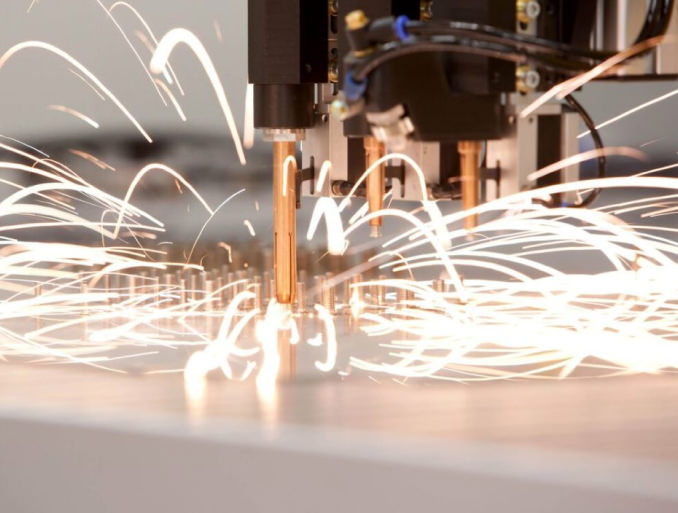Trends In Fastening Technology: New Forms And Functions

Many of the recent innovations in fastening technology owe much to marketplace directives for smaller and lighter packages produced quickly and cost-effectively. These demands dictate that fasteners work harder, “smarter,” and in more ways to advance product design and development. As a result and in a notable departure from the past, designers now will more likely consider and specify attaching hardware as “first thought” instead of afterthought.
For the fastening industry the outcome is that the drawing board (and computer screen) is rarely blank. Participating as active design partner (a trend in itself), leading manufacturers recognize a need to keep pace with evolving applications, giving rise to the next generation of products and fostering entirely new assembly solutions.
A key trend is evidenced by an expanding category of fasteners offering specific functional permanence. These types can be installed permanently and then mated with minimal loose hardware to complete attachment. They replace traditional permanent joining methods, such as adhesives, rivets, and welding, which inherently disallow component disassembly.
Their primary benefit is in providing the means for components to be attached securely while enabling subsequent removal, whether for service or replacement. In short, attachment is “permanent” until or unless otherwise required.
In the electronics industry, concerns about potential (and expensive) damage to printed circuit boards during fastener installation in the final stages of manufacture have contributed to advanced surface mounting capabilities for fasteners. Fasteners currently are being supplied on self-contained tape-and-reel for automated soldering (along with other components) directly onto boards. As fasteners join the lineup of other soldered surface-mounted components, the integrity of boards is maintained, secondary operations are eliminated, the assembly process is streamlined, and expensive scrap is history.
One of the biggest trends in fastening technology is smaller parts. Compact designs for components inherently shrink the “real estate” available to place and install hardware. Miniature fastener types and styles have evolved to fit effectively in the increasingly restrictive design envelopes encountered in industries ranging from electronics to aerospace.
In applications where threads may be required for very thin and “ultra-thin” metal sheets, miniature clinch fasteners offer strong, permanent, and reusable threaded solutions. Some types will even promote installation closer to edges to optimize use in minimal space.
As parts get smaller, innovative delivery systems and automation have arrived to make handling and installation easier.
Loose screws have especially presented problems over the years. When workers must insert small screws by hand or when each screw must be handled and fed one at a time into conventional semi-automated power fastening tools, productivity rates suffer and associated costs rise. Conventional screw-insertion methods have failed in assuring proper seating torque for small screws will be achieved consistently and accurately.
Self-contained in-die fastening systems represent a promising new technology to install fasteners during the stamping process. Working in tandem with a stamping press (and properly tooled die) to feed and install clinch fasteners, these portable systems now on the market eliminate secondary operations typically required for fastener insertions. Users can realize increased productivity, quality, and savings and gain a competitive edge as the system provides a capability to perform two operations (stamping and fastener-installation) simultaneously in the die.
A possibility for some types of fasteners to reduce hardware (and weld nuts) requirements opens the door for fewer parts in an assembly, which is a perennial quest. In the case of clinch fasteners, usually only a single mating screw or nut is required to complete attachment of components. This reduces hardware by half, accelerates the assembly process, and lowers costs.
Unconventional fastener materials are playing newfound roles in achieving benefits that otherwise would not be possible from traditional all-metal fasteners.
As examples, hybrid fasteners incorporate a combination of metal and injection-molded plastic elements and, depending on type, can be less expensive, lighter, and easier to manipulate and install than standard mechanical fasteners. Plastic introduces the opportunity for color-coding, whether for purposes of identification, raising “safety” flags, matching parts, or cosmetics. In this way, fasteners further are serving as multi-functional devices.
The benefits derived from unconventional materials have extended to fastener manufacture. Powdered metal processes have been utilized to create unusual yet highly functional fastener shapes unable to be formed any other way.
Other noteworthy product trends include a growing preference for stainless steel hardware to resist corrosion and new generations of “floating hardware” designs to compensate for misalignment when parts must be mated.
One of the best ways to take full advantage of current (and future) fastening technology products and processes is for product designers to enlist a supplier’s support at the outset of component design. New fastening trends very well may follow.